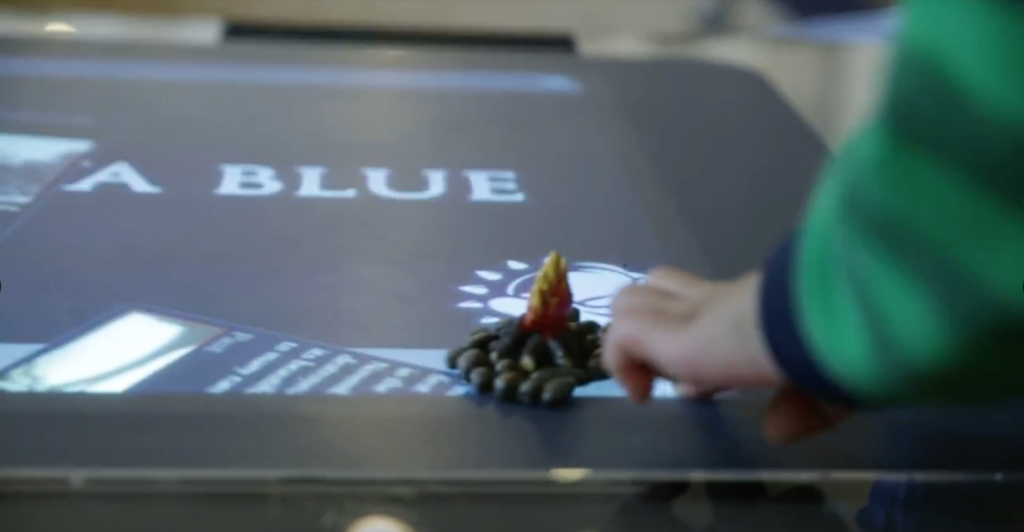Tangible Computing
My first experience with Tangible Computing came in Ken Perlin’s Physical Media class at NYU. We built a cool tabletop game called Krakatoa which was a resource management game that used these “pucks” which were marked with 1,2,3,or 4 dots. If I remember correctly, each of the four players would slide their puck over to a command menu, then slide the puck to a place on the board and their character would go do whatever the command was. I think it was things like “cut wood” or “steal wood” or “burn wood” as you can guess wood was the primary resource for this game. I was still a beginning programmer at the time so I didn’t tackle any of the heavy stuff, but I did do all the audio recording and management and I made the pucks which were painted clay. They felt really nice in your hand when you slid them. Nowadays I would probably use a laser cutter to make them, but back then clay was best and I think it might still be the best.
Working in AR is very much like working on Tabletop Computing, but there is something about the mediation of a device that makes it less engaging. It also has a lot in common with physical computing but the fact that inert objects are used instead of interactive ones also sort of changes things as well. So, when I got to Georgetown I was pretty excited that one of my colleagues knew about one of the old Surface (now pixelsense) tables that I could have. These are the big table kind, not the Sur40, and they were/are way better in a lot of ways. I remember Jeff Han working on the original design for these, again back at NYU, right before he gave his TED talk showing it off (that was my laptop he used for that talk btw–closest I’ll probably ever get to the TED stage). Anyway, I decided to run a little experiment by teaching courses in both Tangible and Physical Computing in the Fall and Spring of my second year to see which one worked better. Turns out physical computing was way better, and that class morphed into my Interaction Design class. I still use the Surface on occasion. I had a student use it ion the Pilgrimage Project and I made an app for the CCT lounge that introduces visitors to our faculty and staff.
The one major finding from that study was how totally useless the written tutorials were in both of those scenarios. Beyond useless actually, dangerous. It’s not that they were bad, they were great. The arduino tutorial on the their website are succinct and simple, and the ones that we made for the Tangibles class were terrific, all the students said so. The problem was that students had basically zero retention from the tutorials, were totally unable to connect them together or to see patterns, and they gave the false impression that the students could do things they simply were not sophisticated enough to do. Given how many tutorials and how much people rely on them in online courses and lots of other venues I suspect this is a going to be a real problem for online courses to overcome in the future.

 D5 Creation
D5 Creation